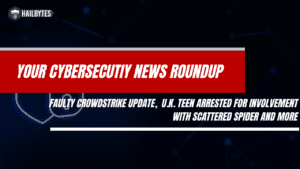Phishing vs. Spear Phishing: What's the Difference and How to Stay Protected

Introduction
Phishing and spear phishing are two common tactics employed by cybercriminals to deceive individuals and gain unauthorized access to sensitive information. While both techniques aim to exploit human vulnerabilities, they differ in their targeting and level of sophistication. In this article, we will explore the differences between phishing and spear phishing and provide essential tips to stay protected against these cyber threats.
Phishing: Casting a Wide Net
Phishing is a broad and indiscriminate approach that involves sending mass emails or messages to a large number of individuals. The goal is to trick recipients into divulging personal information, such as login credentials, credit card details, or Social Security numbers. Phishing attempts typically impersonate trusted organizations, using email addresses or websites that closely resemble legitimate ones. These messages often create a sense of urgency or offer enticing rewards to prompt victims to click on malicious links or open infected attachments.
Spear Phishing: Targeted and Personalized Attacks
Spear phishing, on the other hand, is a more targeted and personalized form of attack. In spear phishing campaigns, cybercriminals thoroughly research their targets to craft highly customized messages that appear legitimate and trustworthy. The attackers often gather information from publicly available sources, social media profiles, or previous data breaches to add credibility to their emails. By posing as a trusted colleague, friend, or organization, spear phishers aim to trick recipients into revealing sensitive information or performing specific actions, such as wire transfers or downloading malware-infected files.
Key Differences
- Targeting: Phishing attacks cast a wide net, aiming to deceive as many individuals as possible, while spear phishing attacks specifically target a select group or even an individual.
- Personalization: Phishing attacks employ generic messages with limited personalization, while spear phishing attacks tailor messages to individual targets, leveraging personal information and context.
- Sophistication: Spear phishing attacks are typically more sophisticated, often utilizing advanced social engineering techniques and a higher degree of research and preparation compared to generic phishing attempts.
Protective Measures Against Phishing and Spear Phishing
- Be Skeptical: Maintain a healthy level of skepticism when receiving unexpected emails or messages, even if they appear to be from trusted sources. Look for red flags like poor grammar, misspellings, or suspicious email addresses.
- Verify Legitimacy: Independently verify the authenticity of requests for sensitive information or financial transactions, especially when they involve unexpected or urgent requests. Use verified contact information or reach out through separate channels to confirm the legitimacy of the communication.
- Be Wary of Clicking Links or Downloading Attachments: Avoid clicking on links or downloading attachments from unknown or suspicious sources. Hover over links to inspect their destination URLs, and if in doubt, manually enter the website address in your browser.
- Keep Software Updated: Regularly update your operating system, antivirus software, and applications to ensure they have the latest security patches, reducing the risk of vulnerabilities that cybercriminals may exploit.
- Implement Security Measures: Employ robust spam filters, firewalls, and antivirus software to detect and block phishing attempts. Utilize web filters to warn against visiting known malicious websites.
- Educate and Train Employees: Organizations should provide comprehensive cybersecurity awareness training to employees, focusing on recognizing and reporting phishing and spear phishing attempts. Simulated phishing exercises can help employees identify and respond effectively to potential threats.
- Enable Multi-Factor Authentication (MFA): Implement MFA wherever possible, as it adds an extra layer of security by requiring additional verification beyond passwords.
Conclusion
Phishing and spear phishing attacks continue to be significant threats to individuals and organizations alike. Understanding the differences between these techniques and implementing proactive security measures are crucial for staying protected. By adopting a skeptical mindset, verifying the legitimacy of communications, being cautious with links and attachments, keeping software updated, implementing security measures, educating employees, and enabling multi-factor authentication, individuals and organizations can significantly reduce the risk of falling victim to these cyber threats.








